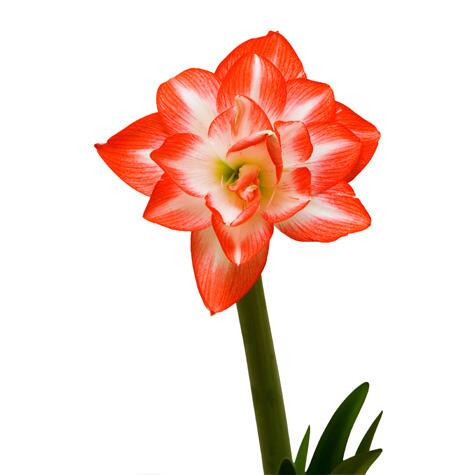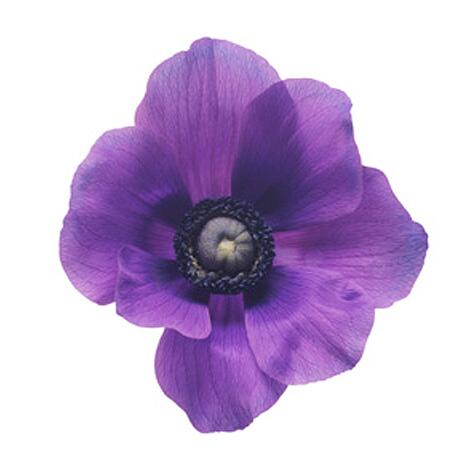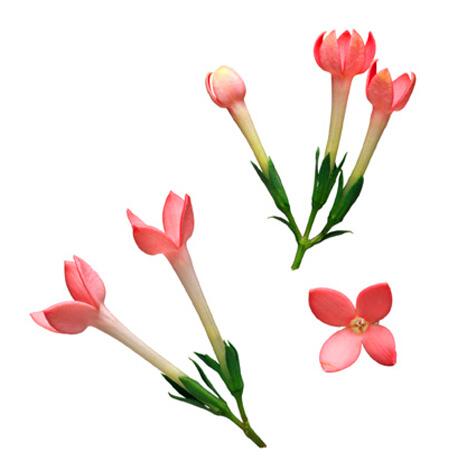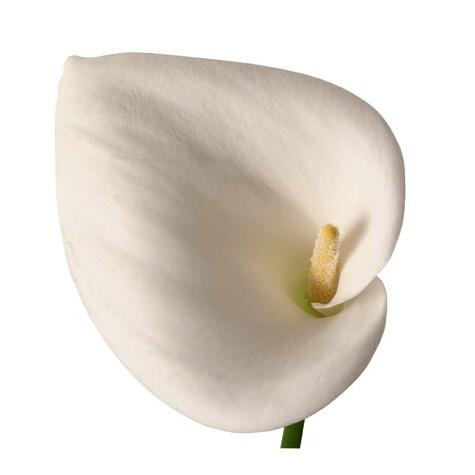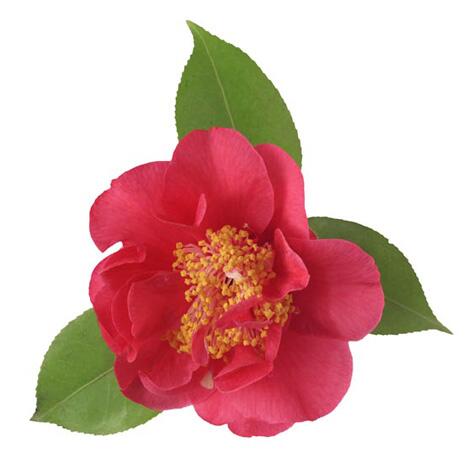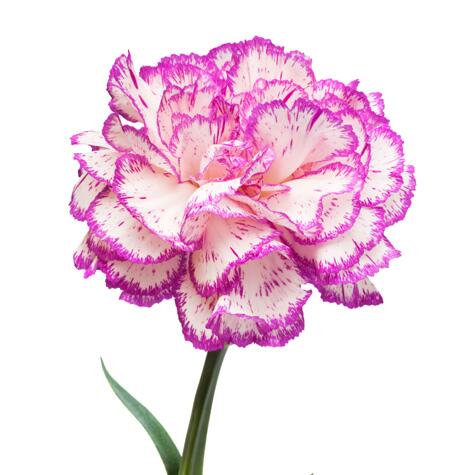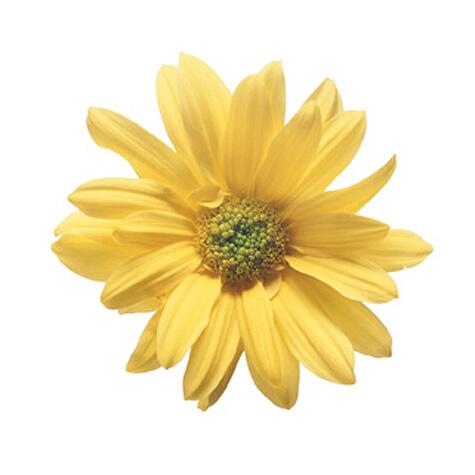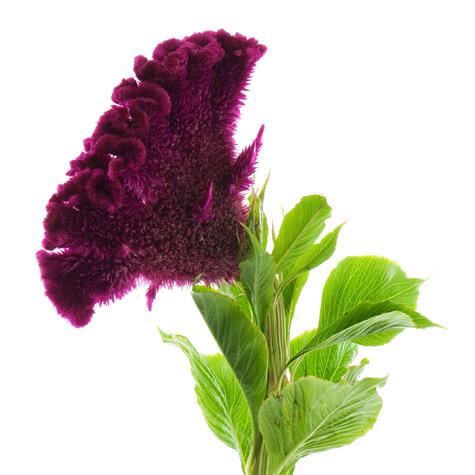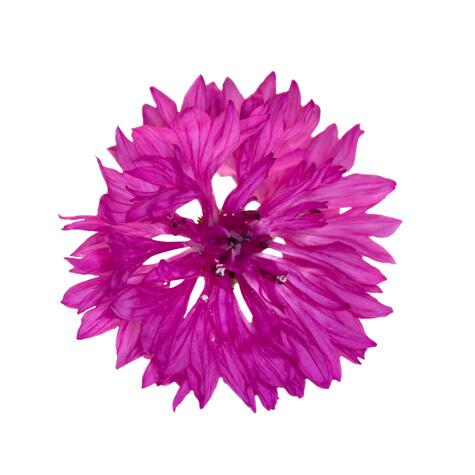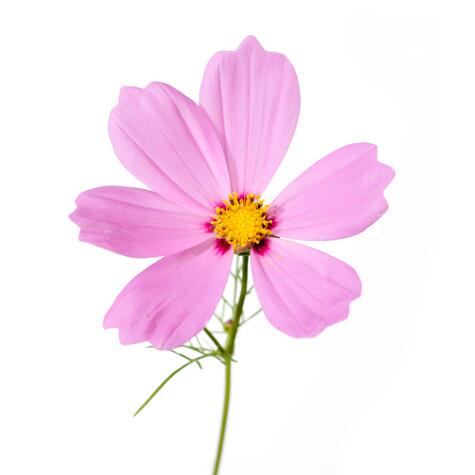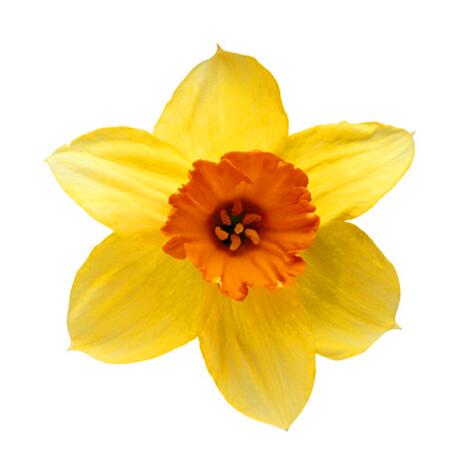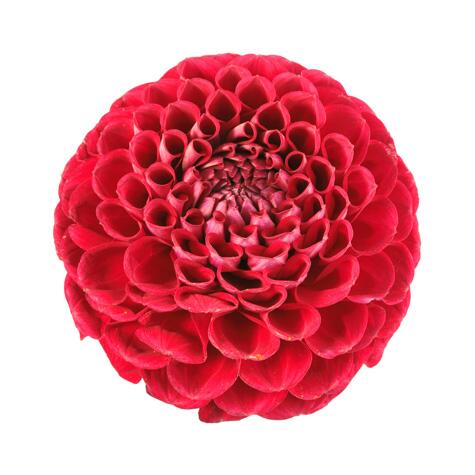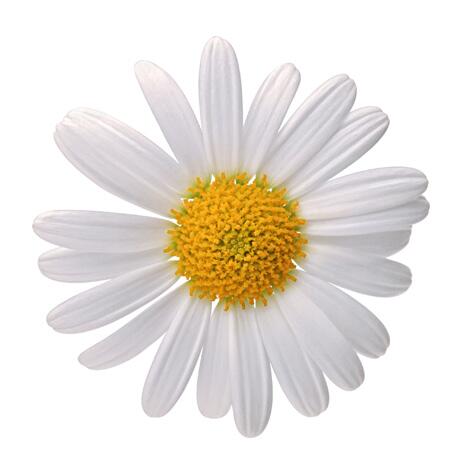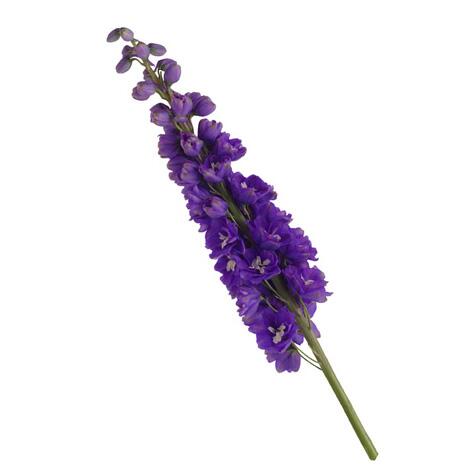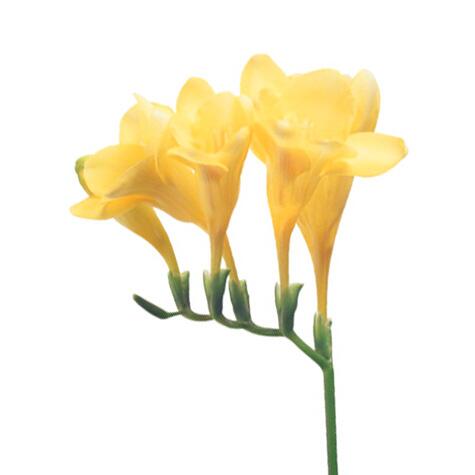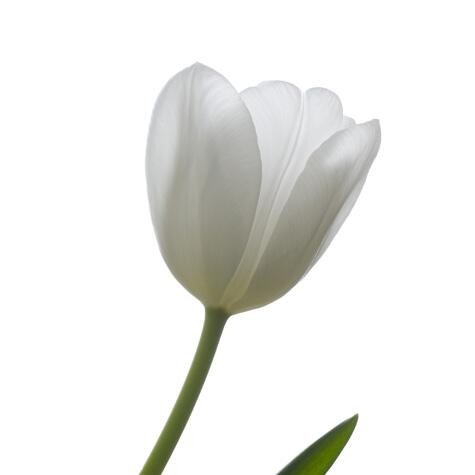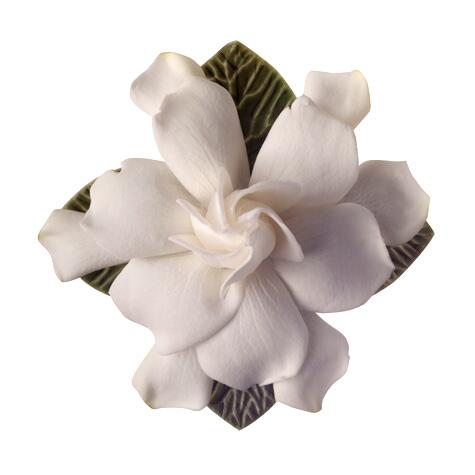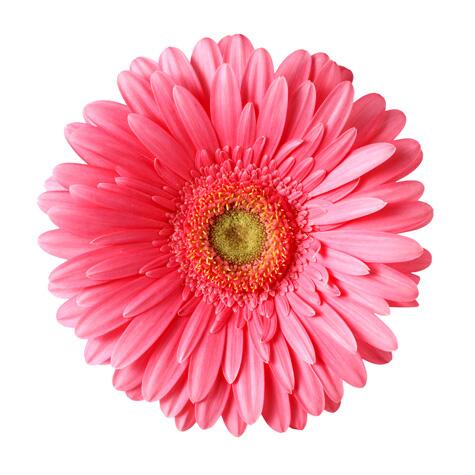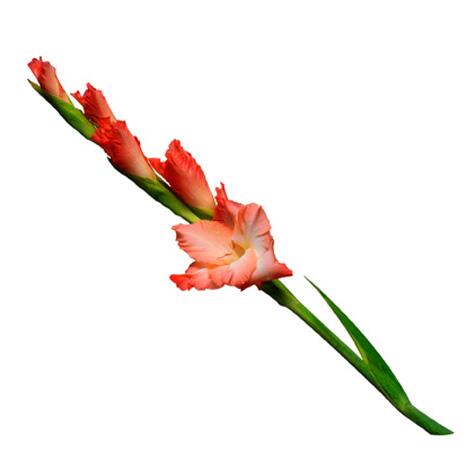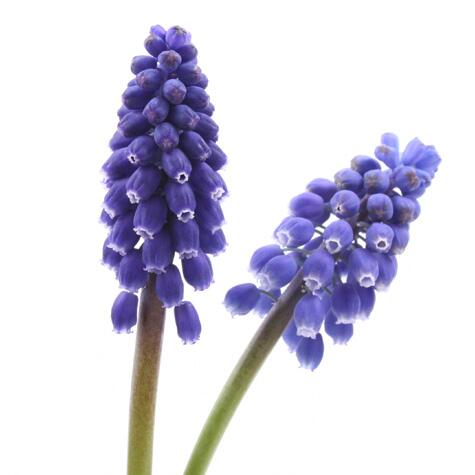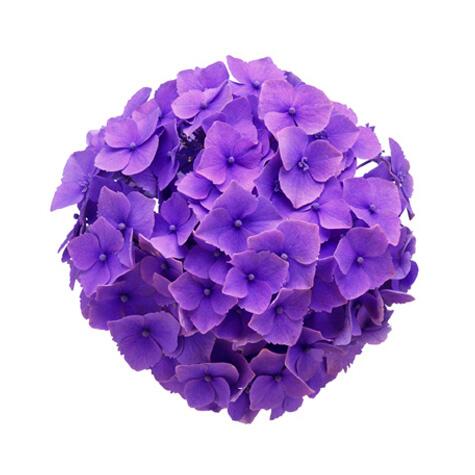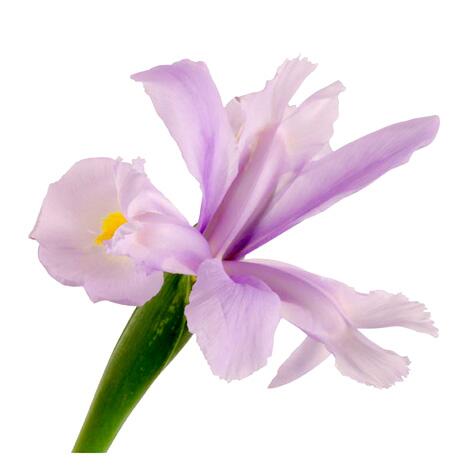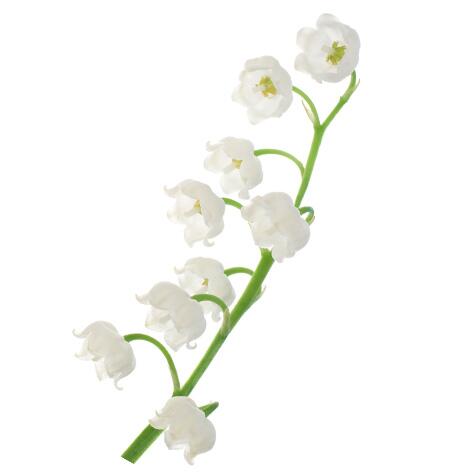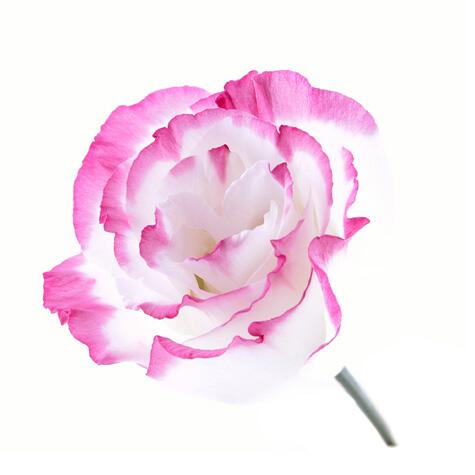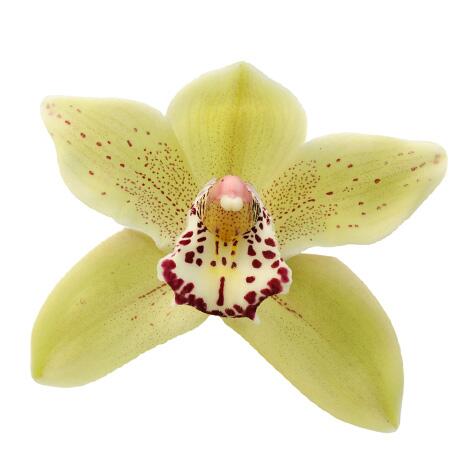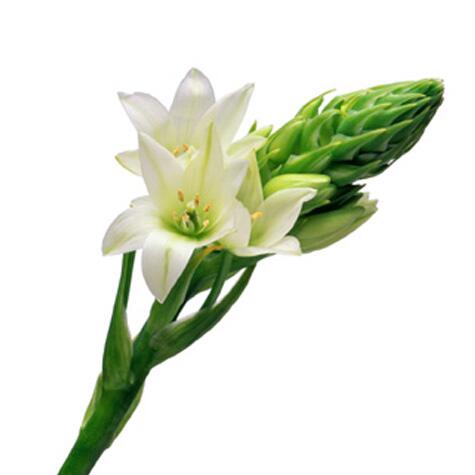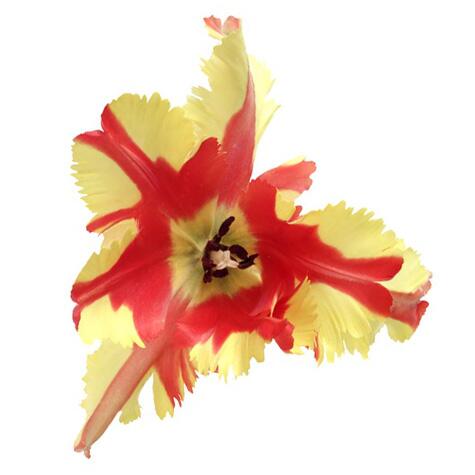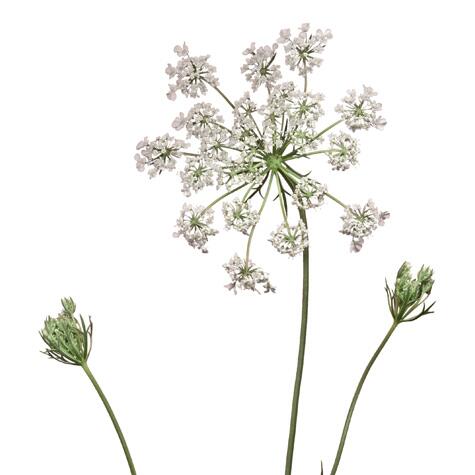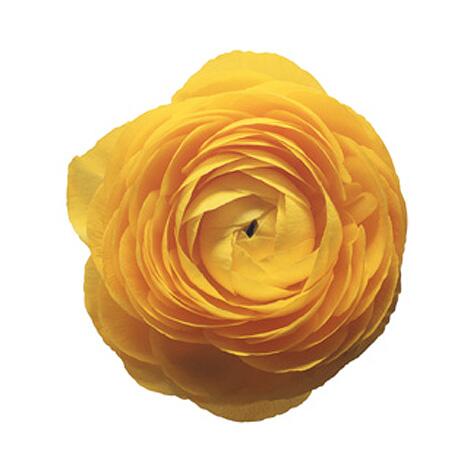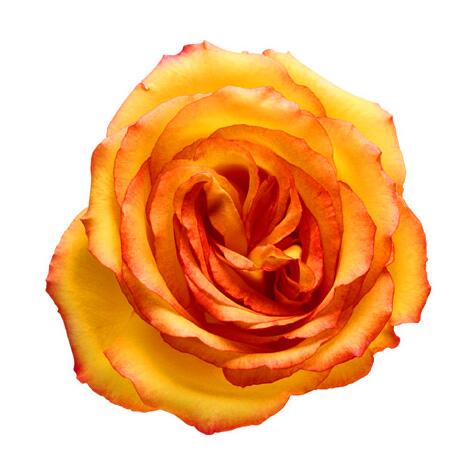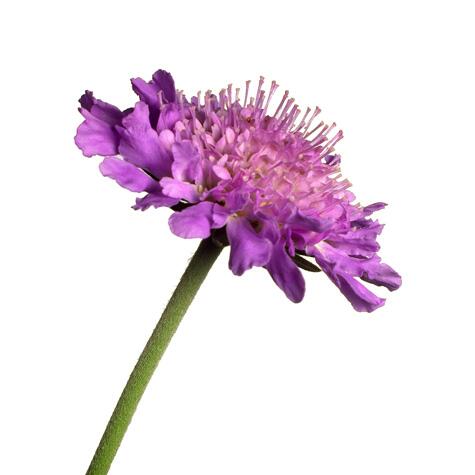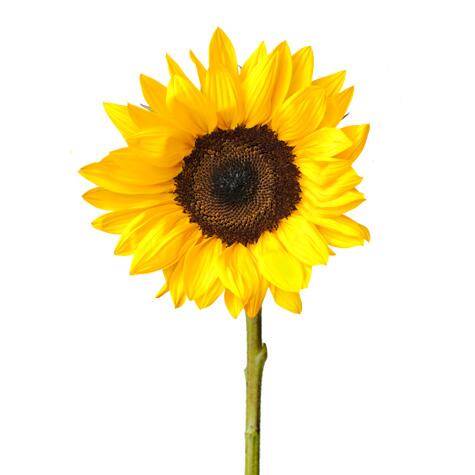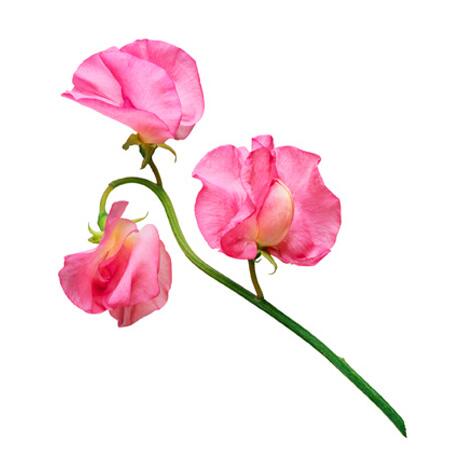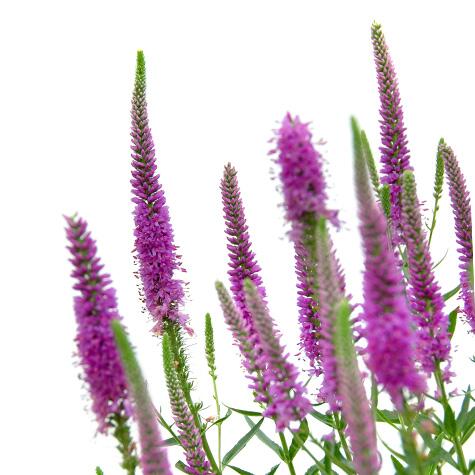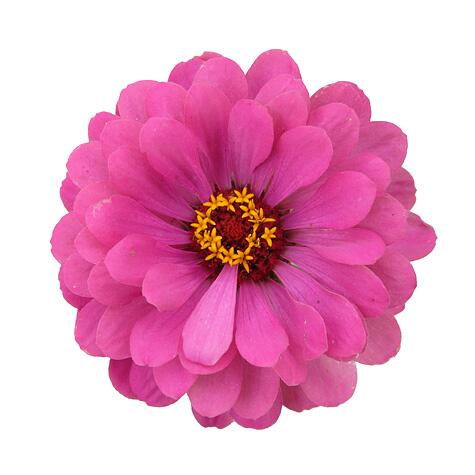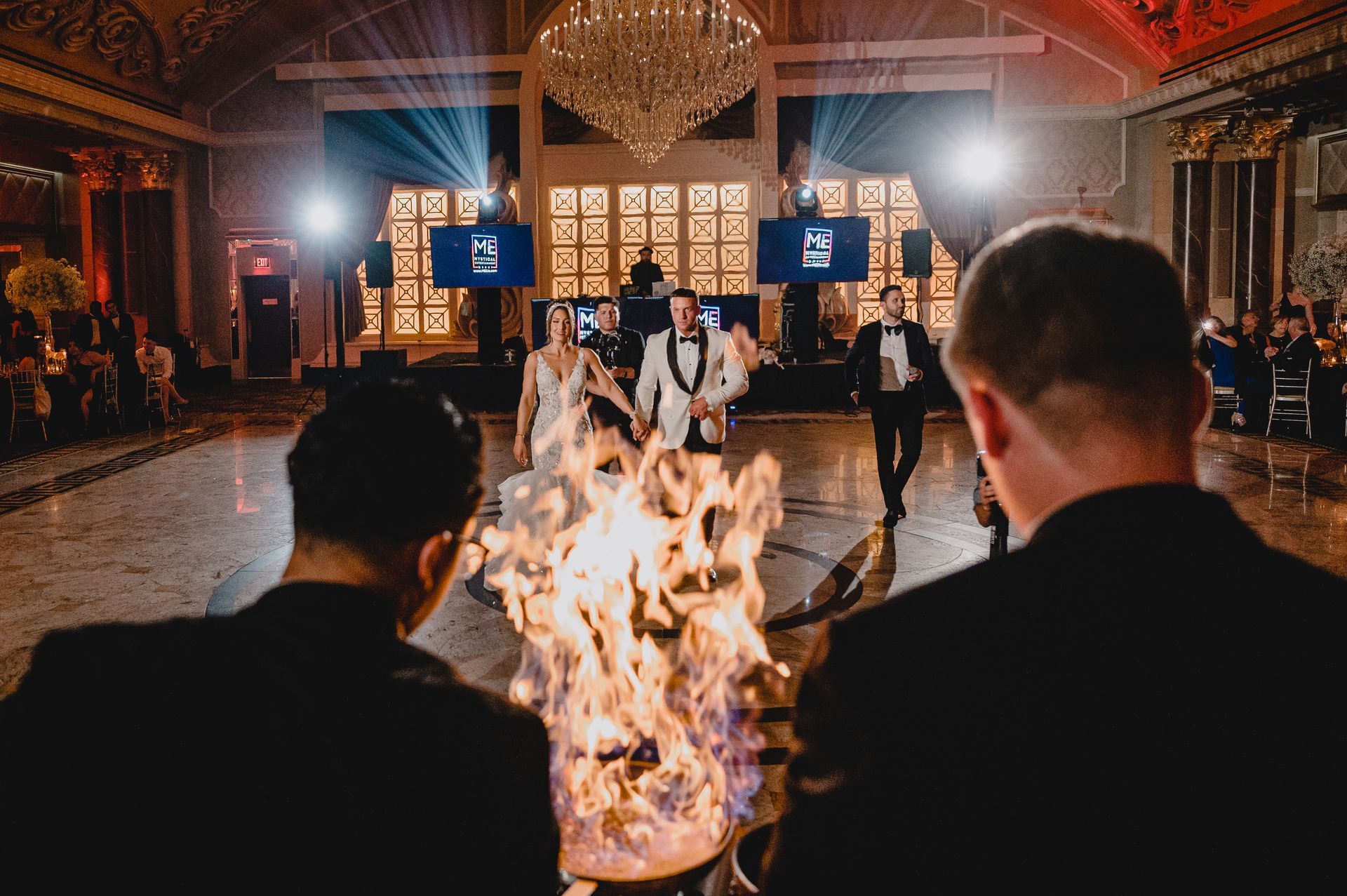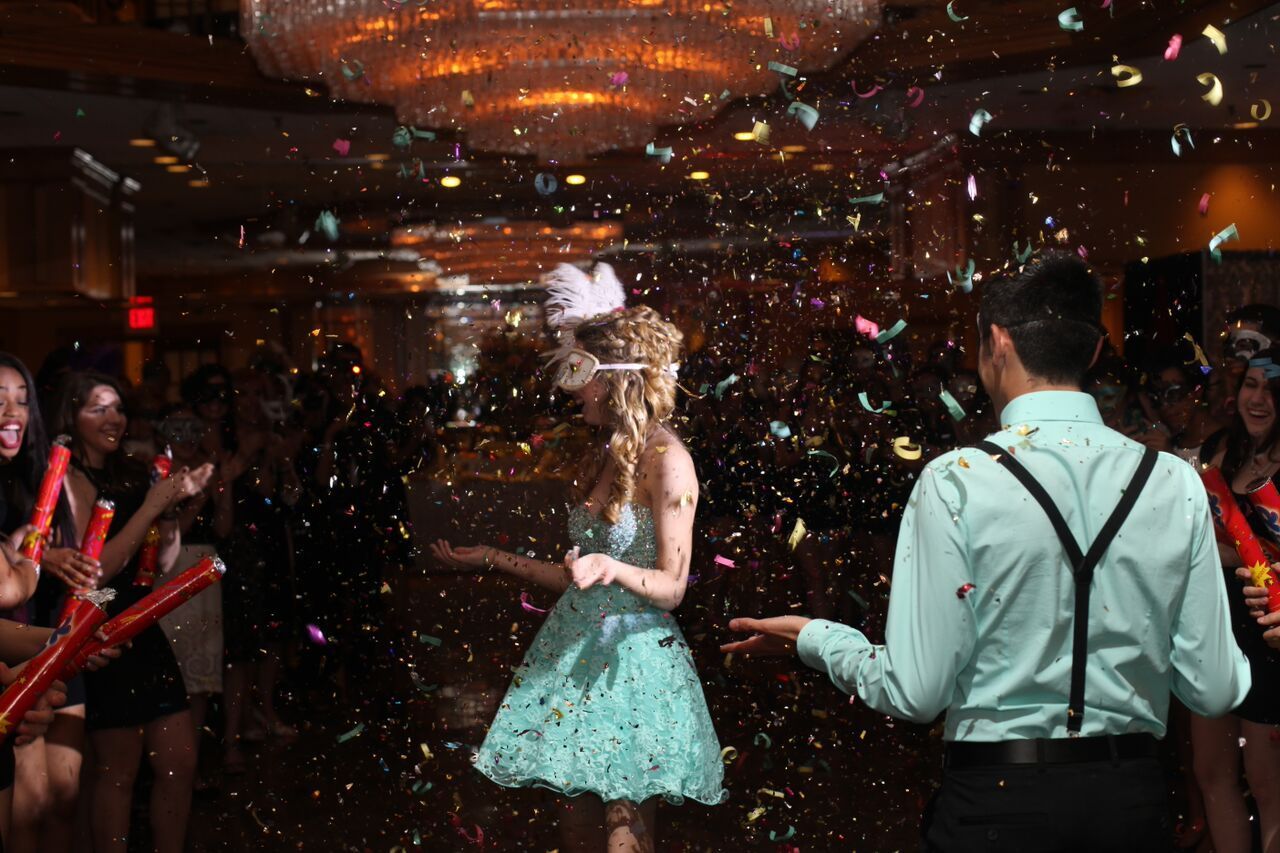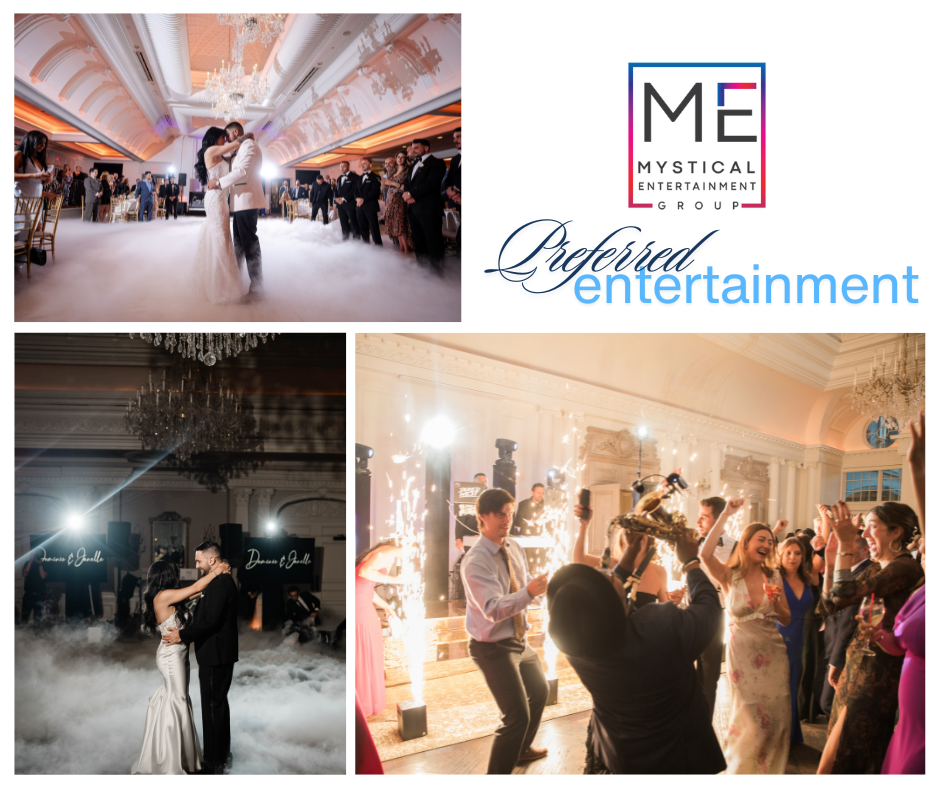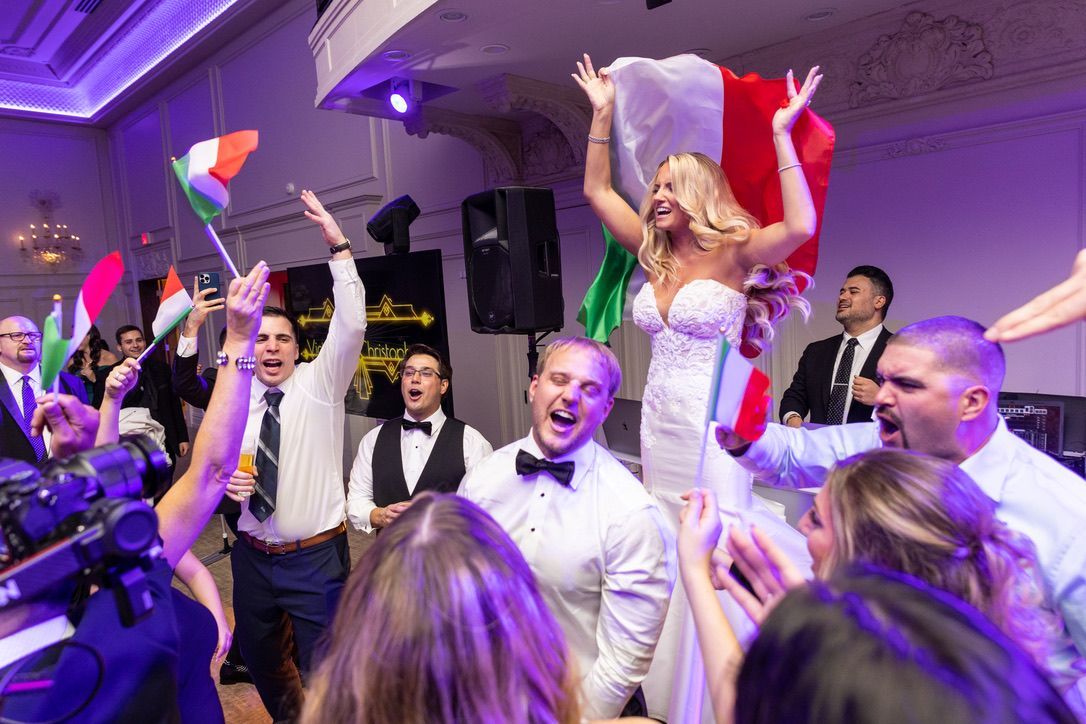BLOG

Choosing flowers that fit your style and petals that match your color palette isn’t always easy — especially if you don’t know a dahlia from a daisy. Here’s everything you need to know about the most popular flowers (cost, season, meanings, and color choices), plus hundreds of photos of each bloom in bouquets, centerpieces, and boutonnieres.
-
Alstroemeria (also known as Peruvian lily)
These flowers have small, bright blooms that grow in clusters and often have freckled petals. They’re best used as a backdrop to primary flowers (but make a lovely and cost-effective bouquet).
Season
year-roundColors
white, yellow, orange, pink, red, lavender, purple, fleckedScent
noneCost
$ -
Amaryllis
See more amaryllis photos
Brides desiring maximum impact may choose this impressive flower, which features two to five large, trumpet-shaped blossoms that open in succession at the top of its extra-long stalk. Grown from a bulb, the amaryllis originated in the tropical rainforests of Africa and South America and is now available in white, pale yellow, pale green, pink, salmon, and red. Very rare and expensive, these flowers are long-lasting and offer a lot of drama with just a few stems.
Season
November-AprilColors
white, yellow, green, pink, red, burgundyScent
none (belladonna variety has a mild sweet fragrance)Meaning
splendid beauty, prideCost
$-$See more amaryllis photos
-
Anemone
Greek mythology has two legends about the anemone. These jewel-toned flowers were said to have sprung up from the blood that was shed by Aphrodite’s lover, Adonis, when he died. The ancient Greeks also believed that Zephyrus, the god of the west wind, favored the bloom, hence its other name: windflower. Though unscented, this relative of the peon and ranunculus is sought after for its vibrant magenta, red, and purple hues. Just a few bright blooms add a blast of color to bouquets and arrangements.
Season
November-May; primarily springColors
white, pink, purple, magenta, burgundyScent
noneMeaning
expectationCost
$-$$ -
Bouvardia
This flower is perfect for fleshing out a classic wedding bouquet or arrangement. It has clusters of small, star-shaped blossoms bursting from a leafy green stem and is very delicate.
Season
year-roundColors
white, peach, pink, redScent
faintMeaning
enthusiasmCost
$ -
Calla Lily
Also known as the arum lily, this trumpet-shaped blossom originated in Africa and symbolized “magnificent beauty” to the Victorians. Two types are commonly available: one with a large head and a long, smooth stem, suitable for tall arrangements or presentation bouquets; and a miniature version ideal for nosegays and boutonnieres.
Season
year-round, winter to late spring is the peakColors
ivory, yellow, orange, light pink, dark pink, red, dark burgundyScent
noneMeaning
ardor, magnificent beauty, feminine, modestyCost
$$$ -
Camellia
A symbol of loveliness and beauty, this multipetaled relative of the tea plant was originally from China. The flower had a notable role in Verdi’s opera La Traviata , which he adapted from the play The Lady of the Camellias. In the story a courtesan named Violetta always wore a white camellia, except for the few days of the month when she was “not available” and donned a red camellia instead.
Season
late-winter to early-spring, fallColors
white, cream, pink, redScent
mild, sweetMeaning
excellence, beauty, perfected loveliness, contentmentCost
$-$$ -
Carnation
Don’t turn up your nose at the common carnation — this long-lasting flower is full of possibilities for weddings. The ruffled-heads look offers an inexpensive way to bring lushness and color to bouquets and arrangements. When massed, they also make a pretty bouquet of their own.
Carnations have a long history; they were reportedly used to make ceremonial crowns in ancient Greece, and they were on hand at the wedding of Maximilian of Austria, the emperor of Mexico (1864-67), symbolizing marital bliss. Today, more than 300 species (in large, single blooms and miniature spray varieties) are available.
Season
year-roundColors
white, yellow, apricot, pale pink, dark pink, red, burgundy, also bicolors and fleckedScent
spicy, clovelikeMeaning
admiration, fascination, strong and pure love, unfading beautyCost
$ -
Chrysanthemum
About a thousand varieties of long-lasting, versatile mums can be found in single blossoms or sprays. The mum has been cultivated in the Far East for more than 2,500 years, even making appearances in the writings of Confucius. What it lacks in sweet perfume, it makes up for in a range of bold colors.
Season
year-round, peak in late summer and fallColors
white, yellow, green, orange, russet, red, burgundyScent
strong, muskyMeaning
cheerfulness, optimism, long life, joyCost
$ -
Coxcomb
Named the coxcomb due to its resemblance to a rooster, this vibrant flower is sure to make a statement. Coming in a variety of colors, this flower looks brilliant when cut short and used as a centerpiece.
Season
mid summer-frostColors
yellow, green, orange, pink, crimsonScent
noneCost
$ -
Cornflower
In medieval lore, it was believed that a girl who placed a cornflower beneath her skirt could have any bachelor she desired — which is perhaps how the flower acquired its other name, bachelor’s button. An inexpensive choice appropriate for a casual wedding, the cornflower comes in white, pink, dark magenta, and, most commonly, blue, with feathery blue-gray foliage. Its button head and colorful legend make it a charming boutonniere flower for groomsmen.
Season
summer-early fallColors
white, pink, blueScent
noneMeaning
delicacy, felicityCost
$-$$ -
Cosmos
Brides hoping to capture the look of a summer garden in full bloom would succeed with cosmos. This daisylike flower grows in shades of pink and magenta on long stems with feathery foliage. A striking chocolate color is also available and can be used to create rich, late-summer arrangements.
Season
mid summer-fallColors
white, pale pink, dark pink, chocolateScent
noneMeaning
modestyCost
$-$ -
Daffodil (also narcissus/paperwhite, jonquil)
Shakespeare and Wordsworth both created rhapsodies about this humble bulb flower. Perhaps it is so well liked because its merry yellow bloom is one of the first to appear after winter’s frost subsides. The daffodil (and members of its family, including the narcissus and the jonquil) is a flower of true variety — blooms can be single or multiple, with large or small cups, in solid colors or in combinations of white and yellow with touches of orange.
Season
November-AprilColors
white, yellow, apricot, orangeScent
clean, sweet or none, paperwhite narcissus have a very strong scentMeaning
regard, respect, chivalry, gracefulnessCost
$-$$ -
Dahlia
These bold, bushy flowers have a history as dramatic as their appearance. Conquistadors found the dahlia in the gardens of the Aztecs and caused a sensation when they brought the flower back to Europe. As the dahlia gained popularity, the pursuit of its potatolike tubers was conducted with intrigue and deception — dahlia tubers were reportedly stolen even from the garden of the Empress Josephine!
Season
summer-early fallColors
white, yellow, orange, pink, red, purpleScent
spicyMeaning
gratitude, dignity, forever thineCost
$ -
Daisy
You may find the daisy a fitting flower for your wedding if you plucked its white petals in a game of “he loves me, he loves me not” as a child. Generally available year-around, the affordable daisy is a lovely and whimsical flower for a casual wedding.
Season
summer-early fallColors
whiteScent
none to faintMeaning
innocence, simplicity, I share your sentimentsCost
$ -
Delphinium (also called Larkspur)
See more delphinium photos A classic in English cottage flower beds, the delphinium has towering spires and clustered florets. The delphinium and its sister, the larkspur, lend a country-garden feel to wedding arrangements while adding height and drama. Delphiniums can be found year-round, but most colors are at their peak from summer to early fall.
Season
year-round, peak June-OctoberColors
white, pink, lavender, purple, blueScent
noneMeaning
well-being, sweetnessCost
$$-$$$ -
Dutch Tulip
Widely available, this flower shouldn’t be overlooked just because it’s fairly common; its versatility and wide range of colors make it a wonderful flower at weddings. Dutch tulips have shorter stems and smaller blossoms than the French tulip.
Season
November-MayColors
white, yellow, orange, pale pink, dark pink, red, purpleScent
none to mild, sweet scentMeaning
declaration of love, honest, happy years, memoryCost
$-$$ -
Freesia
A favorite of perfumers for its fresh, fruity scent, freesia packs a lot of fragrance in just a few blossoms. A couple of stems are all that’s needed to make a bouquet sweet-smelling. The green buds clustered along the thin, arched stem open gradually into delicate flowers.
Season
year-roundColors
most colors are available, except for blueScent
very sweet, almost fruityMeaning
innocenceCost
$$ -
French Tulip
Large, tapered heads spring from graceful stems in this elegant variety. The extra-long stems can be 12 inches or longer, which makes the French tulip a natural for presentation bouquets or tall centerpieces. More expensive than the Dutch variety, the French tulip is most often seen in cream, soft pink, and yellow pastels.
Season
November-MayColors
ivory, pale yellow, pinkScent
noneCost
$$$ -
Gardenia
Surrounded by dark green, waxy leaves, the exquisite gardenia exudes a very sultry and heavy scent. It was this intoxicating fragrance that captivated an English sea captain traveling through South Africa in 1754, prompting him to bring home one of the native plants as a souvenir. But the delicate, creamy ivory petals of this expensive flower can bruise easily, so handle with care. Fragrant gardenias have many uses — carry a few as a posy, wear one as a corsage, or float a few in a low bowl for a minimalist centerpiece. Large three-to four-inch blossoms, as well as a miniature variety, are available.
Season
year-roundColors
ivoryScent
very fragrant perfumeMeaning
transport of joy, ecstasy, I love you in secret, purity, peaceCost
$$$ -
Gerbera
This graphic flower is so flawless in its form that it almost doesn’t look real. Grown in the hottest climates of Asia and Africa, the gerbera is a year-round gem that comes in a crayon-box range of colors — nearly 350 intense shades are available, including bright orange, pink, red, yellow, and burgundy.Season
year-round Colors
white, yellow, orange, pale pink, dark pink, red
Scent
noneMeaning
needing protection, friendshipCost
$ -
Gladiolus
Standing tall and proud, the gladiolus has a spiky stem with large florets that open in succession; miniature varieties with fewer florets are also available. Full stems can be used to add height to arrangements, while the individual florets can be made into boutonnieres. The flower’s name is derived from the Latin word for sword, gladius, after the shape of its leaves.
Season
year-round, peak during summerColors
white, yellow, green, apricot, orange, pale pink, dark pink, red, lavender, purpleScent
noneMeaning
generosity, strength of character, you pierce my heartCost
$ -
Gloriosa Lily
While technically not of the lily family (it grows on a climbing vine, not from a bulb), this flower’s refluxed petals and stamens bear a resemblance to those of actual lilies. Generally pinkish red and tipped with yellow, the gloriosa, or Rothschild lily, adds a tropical punch to bouquets and arrangements.
Season
year-roundColors
red with yellow edgesScent
noneCost
$$-$$$ -
Grape Hyacinth (also called Muscari)
Grape hyacinth gets its name from the shape of its flower and perhaps from its mild, sweet scent. Its cone-shape resembles a miniature bunch of grapes perched upside down on a slender green stem. Sometimes called muscari, grape hyacinth is available in greenish white but is most often seen in a pretty purplish blue. This springtime bulb flower can be expensive, so it is best used as an accent or massed in small bunches.
Season
November-MayColors
white-green, blue-purpleScent
sweet, like grapes or candyMeaning
usefulnessCost
$$-$$$ -
Hyacinth
See more hyacinth photos
In ancient mythology Hyacinthus was a figure in a tale of tragic love. Today, we know this stocky bulb flower as a fragrant signature of spring. The hyacinth’s scent is strong, so only a few flowers are needed to make their presence known in centerpieces or arrangements.
Season
November-MayColors
white, yellow, peach, pale pink, fuchsia, lavender, purple, blueScent
very sweet, stronger as florets openMeaning
benevolence, playCost
$ -
Hydrangea
With its big, bushy head and intense colors, a stem or two of this moderately priced, scentless shrub flower helps fill out arrangements and bouquets. Hydrangea is most popular in shades of bubble-gum pink to sky blue.Season
July-November Colors
white, green, pink, burgundy, purple, blue
Scent
noneMeaning
devotion, remembrance, boastfulnessCost
$$-$$$ -
Iris
This unusually shaped flower has been admired by many throughout history. Ancient Greeks associated it with their gods, and ancient Egyptians linked it to their pharaohs; to the medieval Europeans, it signified chivalry and served as a model for the French fleur-de-lis symbol. Painters like Monet and Van Gogh were captivated by its appearance too. Myth and majesty aside, the three most common varieties are the Dutch iris, the graceful Siberian iris, and the large “bearded” iris, all grown in numerous shades of white, yellow, and purple.
Season
year-round, peak in spring and early summerColors
white, yellow, purpleScent
none to sweet depending on varietyMeaning
message, eloquence, my compliments, promiseCost
$-$$ -
Lily of the Valley
Their fresh, perfumelike scent is unmistakable, and it’s hard to believe such a delicious fragrance can come from such tiny flowers. With its bell-shaped florets dangling from a thin stem, the lily of the valley is sometimes called “the ladder to heaven.” In Norse mythology, the flower is linked to Ostara, the goddess of springtime, and while most plentiful during this season, it remains available — and expensive — year-round. Though most people only know of the white lily of the valley, a very rare rosy pink variety exists too.
Season
available year-round in limited quantities, peak in springColors
white, pale pink (rare)Scent
very fragrant perfumeMeaning
return to happiness, delicacyCost
$$$ -
Lisianthus
This cupped flower somewhat resembles a rose or ranunculus that is missing a few petals. Lisianthus boasts multiple blossoms and buds on a single stem and has a slight peppery scent. Its wide range of colors make it an excellent choice as a secondary flower for bouquets and arrangements.
Season
year-roundColors
white, cream, pale green, peach, pink, lavender, purpleScent
noneMeaning
showinessCost
$$ -
Orchid
Sexy and exquisitely gorgeous, the orchid is a star at any wedding. Thousands of species are cultivated worldwide, which means there is an orchid for every type of bride. A full spray of orchids can be used in bouquets and arrangements, or a simple blossom can be plucked to make an exotic boutonniere.
The main types of orchids commonly used at weddings: cymbidium (usually green; popular, yet expensive; durable yet perishable in cold temperatures); dendrobium (sweetly scented; used in classic Hawaiian leis); oncidium (often referred to as “spray orchids”; they come on slender long branches); vandas (summer-blooming; comes in a rare, yet stunning bluish purple); and phalaenopsis (popular and widely used; usually comes in white and purple).
Season
year-roundColors
white, yellow, green, apricot, orange, pale pink, dark pink, red, burgundyScent
some varieties are fragrantMeaning
luxury, nobility, lustCost
$-$$ -
Ornithogalum (also Chincherinchee, Star of Bethlehem)
This flower is known particularly for its ability to open in the morning and close in the evening. Add it to your bouquet or let it fill in your centerpieces.
Season
year-roundColors
white, ivory, yellow, orangeScent
slight to noneMeaning
purityCost
$$ -
Parrot Tulip
See more tulip photos
Also known as the Rembrandt or parakeet tulip, this showy bloom is noted for its ruffled, striped petals in intense colors. Some varieties feature fringe-tipped petals for added drama. Although beautiful, their full, heavy heads tend to sag and droop and may cause stems to curve, which make them somewhat unpredictable when used in arrangements.
Season
November-MayColors
white/green, yellow. red, orange/green, pink/greenScent
noneCost
$$-$$$ -
Peony
The peony is showy in its lush and full-headed structure, sweet perfume, and bright colors. Despite these traits, the flower became a symbol of bashfulness. Cultivated in Asia for more than a thousand years and developed further by the French, the peony is a cherished wedding flower. A relative of the ranunculus and the anemone, the peony is available in two main types: the herbaceous and the tree peony (the latter flowers do not last as long when cut).
Season
spring, imported, scentless variety available in fall and winterColors
white, cream, peach, pink, burgundyScent
sweet and mild to very aromaticMeaning
beauty, welcome, bashfulnessCost
$$-$$$ -
Phlox
Perhaps phlox’s popularity at weddings is due to its meaning: “unification of the souls.” These dainty flowers originated in North America, where they are a backyard staple. With large clusters of small-petaled, disk-shaped blossoms atop branching stems, phlox provides a lush backdrop for featured flowers in a bouquet or arrangement.
Season
June-NovemberColors
white, orange, pink, red, purpleScent
sweet and mild to very aromaticMeaning
our souls are united, proposal of love, sweet dreams, unanimityCost
$$ -
Queen Anne’s Lace
Known for the flower head’s similar appearance to lace, this wildflower symbolizes “protection.”
Season
spring-early fallColors
white, greenScent
grassy scentMeaning
haven, protectionCost
$ -
Ranunculus
Looking for a cost-effective alternative to the rose and the peony? Try the lush, multipetaled ranunculus, a relative of the buttercup. This flower was first seen by Westerners in the Far East around the thirteenth century. Available in practically every color, the ranunculus features several blossoms and a stem with fernlike foliage.
Season
November-AprilColors
white, yellow, apricot, orange, pale pink, dark pinkScent
mild, sweetMeaning
you are rich in attractions, I am dazzled by your charmsCost
$-$$ -
Rose
Is it any wonder that roses rank as the most beloved of wedding flowers? Long considered a symbol of beauty and love, the rose has captivated commoners and royalty alike. Legend has it that the Roman Emperor Nero required rose petals to be strewn at his feet and wore wreaths of roses at his many weddings; and that Cleopatra seduced both Julius Caesar and Marc Anthony with the flower.Their accessibility means that roses can be surprisingly affordable. However, the price of roses goes up around key flower-giving holidays such as Valentine’s Day and Mother’s Day — so if your wedding date is near one of these holidays, you may want to rethink your flower choice. Three main types of roses are likely candidates for your wedding flowers: hybrid tea roses, spray roses, and garden roses.
Season
year-roundColors
white, cream, yellow, apricot, orange, pale pink, dark pink, red, burgundy, lavenderScent
none to intense, depending on the varietyMeaning
several meanings depending on color, general, love, beauty, grace, joy, unityCost
$$-$$$ -
Scabiosa
It’s not hard to figure out how the scabiosa, with its tufted head atop a long, wiry stem, got its other name, pin cushion. This enchanting flower is right at home tucked in between showier blooms.
Season
spring-early fallColors
white, burgundy, lavenderScent
noneMeaning
sensible womanCost
$$-$$$ -
Stephanotis
The name stephanotis means “marital happiness,” making the flower an obvious choice for weddings. The star-shaped, waxy florets grow on a flowering vine; each must be individually wired or placed onto a special holder before it can be used in a bouquet or boutonniere.
Season
year-roundColors
whiteScent
slight to noneMeaning
will you accompany me?Cost
$$$ -
Stock
Rising from a tall stem, stock has dense clusters of small single- and double- blossomed flowers. Stock first became known outside of the Mediterranean region toward the end of the Middle Ages. Stock is valued for its use as a complementary flower and its fragrant, spicy clovelike scent.
Season
year-round, peak in spring and summerColors
white, yellow, apricot, pale pink, dark pink, purpleScent
strong, spicy clove scentMeaning
promptness, lasting beautyCost
$ -
Sunflower
The head of the sunflower follows the sun as it moves across the sky, a trait that undoubtedly inspired its symbolism — “adoration” and “loyalty.” Bold and flashy, with raylike petals and disk-shaped dark centers, the sunflower is most at home at informal weddings. It comes in warm colors, from golden yellow to deep reddish brown.Season
May-November, peak in summerColors
pale lemon, deep gold, orange, russet, brownScent
noneMeaning
loyalty, adoration, prideCost
$$ -
Sweet Pea
The sweet pea was first brought to England from Sicily in 1699, and the English have had a love affair with this delicate flower ever since. Its sweet scent and rugged blossoms grown on a spindly green vine make this flower an old-fashioned favorite.
Season
November-JuneColors
white, cream, apricot, pale pink, dark pink, red, lavender, purpleScent
intense, sweet fragranceMeaning
everlasting pleasuresCost
$-$$ -
Tuberose
A native of Mexico, the tuberose has a very strong, heady scent, so small quantities of this flower go a long way. Its white, trumpet-shaped florets grow in clusters and open gradually along a light green stalk; the closed buds have a pink or green tinge. Most commonly used as a secondary flower, the tuberose lends bouquets a soft color and an intoxicating fragrance.Season
summer-fallColors
ivory, pinkScent
very strong perfumeMeaning
dangerous love, voluptuousnessCost
$$-$$$ -
Tweedia
Best used as an accent flower, these cheery, star-shaped blossoms grow on climbing branches. While available in white and pink, tweedia is most admired in its unusual soft blue hue. A delicate tweedia boutonniere provides a little “something blue” for the groom’s lapel.
Season
April-NovemberColors
blueScent
noneCost
$ -
Veronica
Shaped like a plume, the tapered spike of veronica pokes out from the tops of arrangements and bouquets for a wild, garden-inspired look. Its white, pink, or blue color meshes with its greenery to provide a lush complement to more prominent flowers.
Season
year-roundColors
white, pink, purple, magenta, burgundyScent
noneMeaning
fidelityCost
$-$$ -
Zinnia
Brides seeking a spectrum of unforgettable color and a causal garden style will appreciate this perky, daisylike flower. The zinnia symbolizes “thoughts of friends,” which makes it an appropriate element in bridesmaid bouquets or reception centerpieces.
Season
June-SeptemberColors
yellow, green, orange, pink, redScent
noneMeaning
thoughts of friendsCost
$We kind of want all of these flowers everywhere! If you’re planning an event and need some or all of these flowers, we actually do know a guy! Also, head to our Pinterest to get some awesome flower arrangement ideas!





